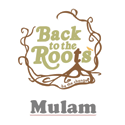Kondapalli Toys
TOY TOWN OF ANDHRA PRADESH
INTRODUCTION ON TRADITIONAL TOYS
My Vijayawada friends invited me to Kondapalli, where a Kondapalli traditional toy exhibition is being hosted by Kondapalli manufacturers. The goal of their exhibition was to raise awareness about traditional toys and to restore the lost glory of kondapalli toys. Toys have a long history in India. Traces of traditional toys can be found dating back 5000 years. The creation of dancing women and small carts began in the Harapan and Mohenjadaro civilizations, which discovered skilled craftsmanship. India has a rich storytelling culture, which is reflected in its toys. Our forefathers preserved this culture by creating toys that depict various aspects of life. They created a line of toys based on stories from our epics, such as the Ramayana and Mahabharata.
In this article, I’ll go over the history and significance of Kondapalli traditional toys.
Origin of kondapalli toys:
The Durga temple in Vijayawada is well-known. This city is also well-known for its handicrafts, which have piqued the interest of toy collectors. Kondapalli is an industrial area in Andhra Pradesh, near Vijayawada.
Kondapalli is named after a shepherd named “Kondadu” who showed King Kondaveedu Reddy a location, thus the name Kondapalli. The town is famous for its kondapalli fort and locally produced toys known as bommallu. South Indians prefer to collect these toys for Bommala Kolluvu celebrations.
Kondapalli toys are well-known for their light weight, vibrant colors, and time-honored manufacturing methods. Their main themes for creating toys are mythology, rural life, and animals. These toys have realistic and joyful expressions.
The Aryakshatriyas, who migrated from Rajasthan and settled in Kondapalli around the 16th century, were responsible for the creation of these toys. This toy-making tradition has been passed down for 400 years. Each member passes down this skill from generation to generation, sculpting many sculptures in Andhra Pradesh’s many temples, including Garuda, Nandi, Simha, and the Vahanas. My Vijayawada friends invited me to Kondapalli, where Kondapalli manufacturers are hosting a Kondapalli traditional toy exhibition.
The exhibition’s goal was to raise awareness about traditional toys and to resurrect the lost glory of kondapalli toys.
Toys have a long history in India. Traces of traditional toys can be found dating back 5000 years.
The Harapan and Mohenjadaro civilizations, which discovered skilled craftsmanship, were the first to create dancing women and small carts.
India has a rich storytelling culture, which is reflected in its toys. Our forefathers preserved this culture by creating toys that depict various aspects of life.
They created a line of toys based on stories from our epics, such as the Ramayana and Mahabharata.
In this article, I’ll go over the history and significance of Kondapalli traditional toys.
Origin of kondapalli toys:
The Durga temple in Vijayawada is well-known. This city is also well-known for its handicrafts, which have piqued the interest of toy collectors. Kondapalli is an industrial area in Andhra Pradesh, near Vijayawada.
Kondapalli is named after a shepherd named “Kondadu” who showed King Kondaveedu Reddy a location, thus the name Kondapalli. The Kondapalli fort and locally produced toys known as bommallu are two of the town’s most notable features. South Indians prefer to collect these toys for Bommala Kolluvu festivities.
Equipment:
A white sander, Tella Poniki, was used to make these toys. This type of wood is soft, lightweight, and easily carved. Craftsmen will bring this wood from nearby forests, and instead of cutting down the entire tree, they will bring branches so that the tree can regenerate its branches and the wood is available for a longer period of time.
Mukku is another material used in the production of the toys.
(tamarind seed and sawdust paste for glueing), sudda (lime), temma jiguru (acacia gum). as well as natural dyes. The painting brushes are made of goat fur and are fine and sharp.
They use carving tools such as a drill, hammer, axe, bahudara (for carving), aakrai (for filing), and chisels for finer work.
The steps involved in creating kondapalli toys are as follows:
Wood Cutting and Seasoning Selection
Cutting, bending, filing, and gluing
Finishing
Precoating
Painting
The craftsman’s themes for his or her creations include the following:
Birds and animals
Life in the country
Mythological Characters
Modern Designs
Dancing Dolls Made of Paper Mache
Tanjavur (from Tanjavur).
Conclusion:
To preserve our ancient India’s rich glory, state governments and non-governmental organizations must step forward. The artisans should be encouraged, and their work should be promoted all over the world. Let us make their lives easier by promoting their products on a national and international scale. More exhibitions should be conducted
to increase public awareness of our traditional handicrafts

